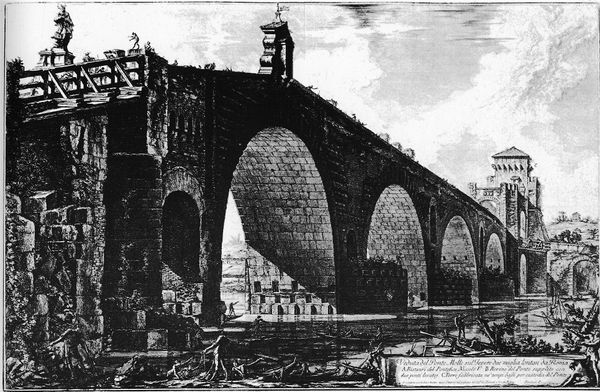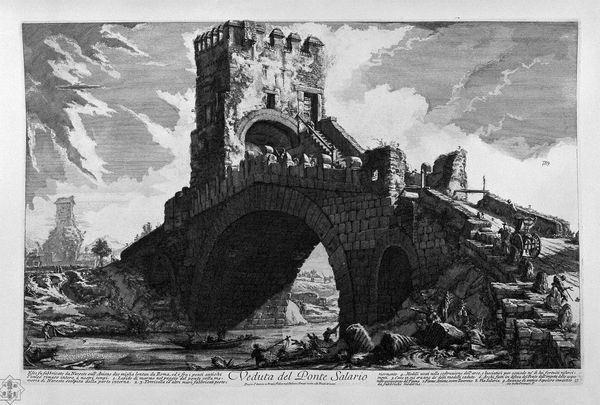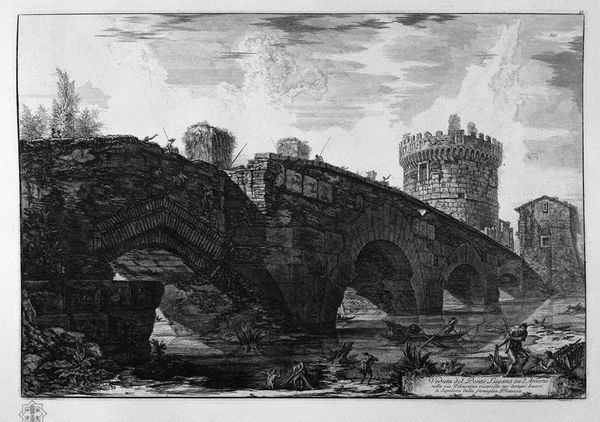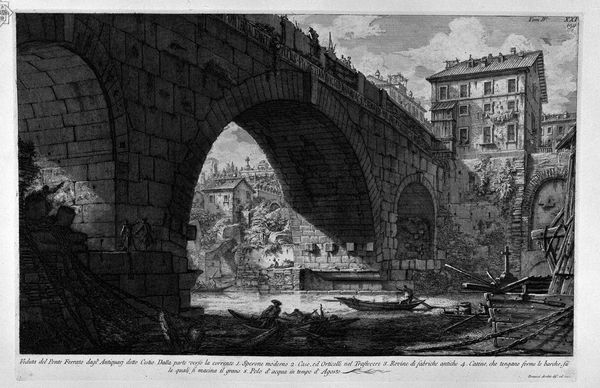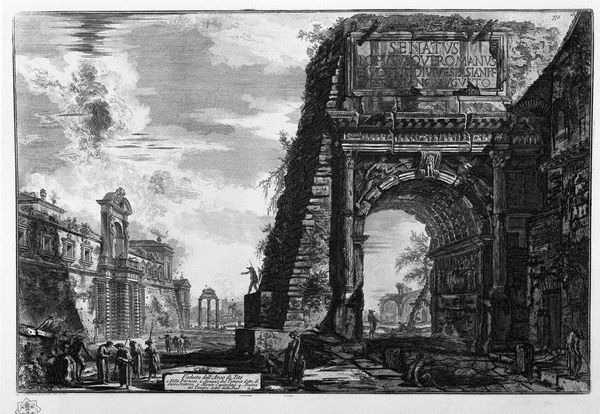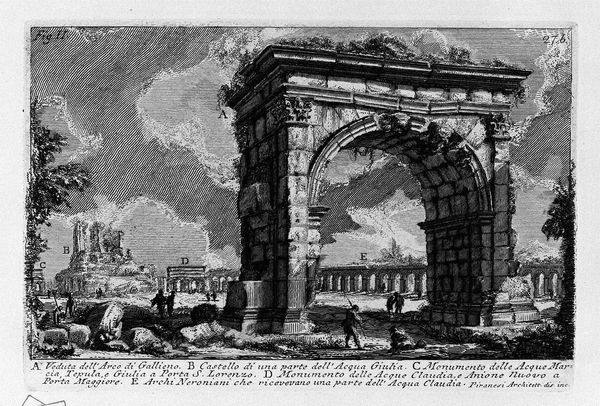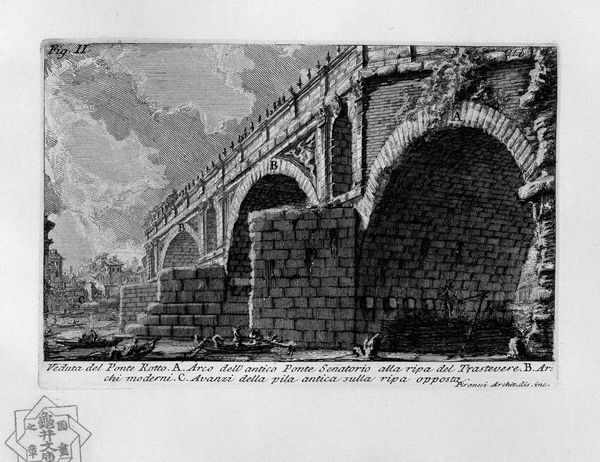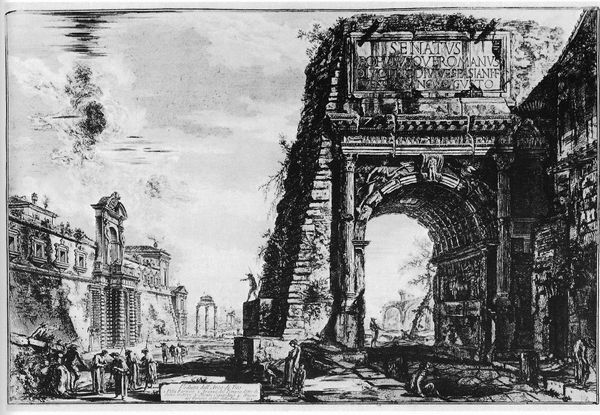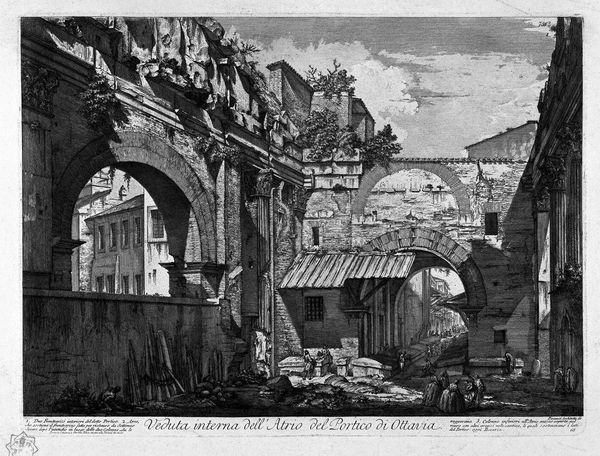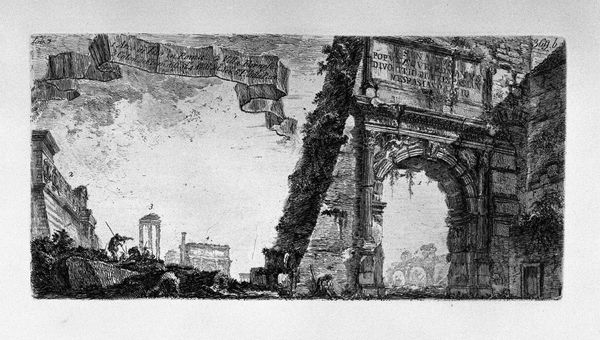
View of the Mausoleum of Hadrian Helium (now called Castle St. Angelo, on the other side of the facade inside the Castle)
0:00
0:00
print, etching, engraving, architecture
#
baroque
# print
#
etching
#
sculpture
#
landscape
#
perspective
#
charcoal drawing
#
form
#
romanesque
#
arch
#
line
#
cityscape
#
history-painting
#
italian-renaissance
#
engraving
#
architecture
Copyright: Public domain
Editor: This is Giovanni Battista Piranesi’s print, "View of the Mausoleum of Hadrian, Helium (now called Castle St. Angelo...)," an etching really emphasizing architecture. It’s overwhelmingly…grand. How do you interpret this work, considering its architectural focus? Curator: For me, the image is less about simple documentation and more about evoking the *idea* of Rome. Look at how Piranesi manipulates the scale; the tiny figures almost disappear against the immensity of the architecture, which amplifies the cultural memory and the psychological weight of the Roman Empire. What feeling do you get from this juxtaposition? Editor: It makes me feel insignificant, I suppose. The bridge seems timeless and enduring, and the people temporary. Curator: Exactly. And consider the Mausoleum itself – Hadrian, the emperor, envisioned it as his final resting place, a monument to his power. Yet, it transformed over centuries, becoming a papal fortress, a prison. What do those layered meanings suggest to you? Editor: A constant reinterpretation? History isn't fixed; it is ever changing, adapting to present needs. Curator: Precisely! The Mausoleum remains standing, its symbolic weight shifts as power dynamics shift, reflecting Roman continuity and rebirth. I wonder, does viewing art like this help bridge time? Editor: It does! By focusing on the symbolism and how things transform, these connections can make the artwork and our past seem that much more alive.
Comments
No comments
Be the first to comment and join the conversation on the ultimate creative platform.
